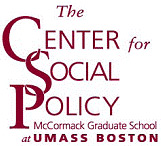

Maturing Subsidized Mortgages: The Next Frontier of the Expiring Use Crisis
By Emily Achtenberg
Emily Achtenberg is a Housing Policy & Development Consultant in Boston
ejpa@aol.com
Over the next decade, close to 17,000 units in 130 federally- and state-financed developments in Massachusetts could be lost as affordable housing as they reach the end of their 40-year subsidized mortgage terms. The maturing mortgage crisis represents the latest challenge to the privately-owned subsidized housing stock, its lower income residents, and the communities where these developments are located.
Since 1987, some 6,700 net affordable units have been lost as owners have prepaid their subsidized mortgages or opted out of their rental subsidy contracts. While Massachusetts has also had a strong track record in subsidized housing preservation, recent experiences with maturing mortgage properties–including the loss of more than 800 affordable units at 3 Boston developments–suggest that new approaches will be needed in the future.
The study reveals some of the characteristics of this housing that pose special challenges for preservation and tenant protection, as well as the unique benefits that make these developments especially worth preserving.
- While fewer than half the units have project-based rental subsidy, their rents are generally affordable to very low income households–a unique benefit offered by 40-years of budget-based rent regulation. Without additional project-based subsidy, it will be very difficult to preserve the current occupancy profile of the housing in the future.
- Many maturing mortgage properties are located in strong market neighborhoods where they are vulnerable to conversion pressures. Outside the major cities, the loss of an existing subsidized property will often put the municipality out of compliance with Chapter 40B.
- Since Enhanced Vouchers (tenant-based rental subsidy) are not directly authorized when a subsidized mortgage expires, there is a substantial risk of tenant displacement. Even with Enhanced Vouchers, the unique role currently played by many of these properties in preserving racial and economic diversity in their communities will be lost upon tenant turnover.
- While 20% of the units are at immediate risk (through 2010), 50% will not reach mortgage maturity until at least 2015. These properties provide a significant opportunity for cost-effective “preemptive” preservation.
To address these challenges, state legislation is needed to provide, at a minimum, a meaningful Right of First Offer and a Right of First Refusal to DHCD (or its designee) when a subsidized property is offered for sale, including adequate tenant protections (S. 666/ H. 3573). Additionally, adequate state resources should be targeted to facilitate the acquisition and preservation of at-risk properties on a timely basis, and to permit qualified community-based non-profit purchasers to compete on a level playing field with private buyers. To promote cost-effective preservation, MassHousing should permit high-risk subsidized properties to refinance prior to mortgage maturity, in exchange for extended affordability restrictions. Finally, federal legislation is needed to permit owners to project-base Enhanced Vouchers and to expand the scope of Enhanced Voucher eligibility.
______________________________________________________________________________________
This analysis was made possible with data provided in part by the Community
The views expressed herein are not necessarily those of CEDAC, the Hyams Foundation, the University of Massachusetts Boston, or the Boston Tenant Coalition.Economic Development Assistance Corporation (CEDAC).
Financial support was provided in part by the Hyams Foundation.
______________________________________________________________________________________
Center for Social Policy • University of Massachusetts Boston
100 Morrissey Blvd. • Boston, MA 02125-3393
617.287.5550 • http://www.mccormack.umb.edu/csp
